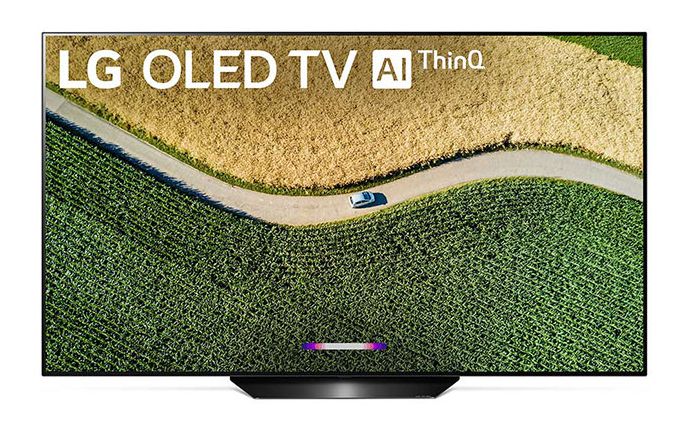Television has been captivating audiences for nearly a hundred years. The appliance has become a staple in every home. It’s a key source of both entertainment and information for every household.
Even amid the rapid rise of computers and smart devices—alternative screens on which people can consume their favorite content—TV has shown no signs of slowing down. The TV continues to chart its course toward further innovation, incorporating connectivity and interactivity features to stay relevant in the eyes (and hands) of its users.
The visual experience, of course, remains the primary reason people remain interested in TVs. This is why advancements in display technology stay at the forefront of innovation for this appliance. Here, we discuss TV’s next great evolution—OLED.
Breaking down OLED technology
OLED stands for organic light-emitting diode. This display technology uses a carbon-based film set between two conductors beneath the TV screen. With OLED, each pixel emits its own light when an electrical current passes through it.
This makes OLED panels fundamentally different from today’s predominant screen technology, the LCD (liquid crystal display). LCD screens need an external source of light, which today typically works through backlighting by standard light-emitting diodes (LEDs).
What makes OLED the next big thing for TVs?
OLED raises the bar in picture quality
For an appliance designed to deliver an outstanding visual experience, a TV must be able to offer impeccable picture quality. This is exactly what you get from an OLED TV.
OLED addresses backlight bleeding, which is one of the most common complaints against LCD displays. OLED pixels, being self-emissive, can turn off and go completely pitch-black when necessary. This eliminates the problem of the backlight unnecessarily illuminating neighboring pixels that are supposed to appear as dark on screen.

Anchored by its ability to generate absolute blacks, OLED panels boast exceptional contrast ratios and high dynamic range (HDR). With deeper blacks and brighter whites, OLED TVs can offer a more vibrant and accurate color definition than ever before.
Another way OLED panels are able to generate a wider range of colors is by incorporating dedicated white pixels. These expand the range that the usual array of red, green, and blue sub-pixels creates on common LCD screens.
The individually-lit pixels give OLED screens notable advantages over backlit LCDs
Individually-lit pixels allow for uniform lighting across the entire screen. It ensures that no excess light bleeds or creates any “hot spots” to muddle up supposedly dark images. On an OLED screen, you can count on intense and consistent contrast and color reproduction—a combination that also enables wider viewing angles overall.
The innovative pixel technology also greatly improves refresh rates, which means less motion blur on your screen. Blockbuster action scenes and live sports broadcasts in high definition have never looked better than on OLED TVs.
OLED allows next-generation TVs to become physical marvels
What truly makes OLED technology a game-changer is how it affects the physical construction of TVs.
With individual pixels that emit their own light, OLED panels don’t require as many layers as the ubiquitous LED-backlit LCD TVs. Because of this, TV manufacturers are now able to design thinner and lighter—not to mention, more energy-efficient—television sets.
By now you might already be reading about groundbreaking TV designs that seem as if they’re straight out of science fiction.

Samsung, for one, has been turning heads with its line of TVs with curved screens. The unorthodox look is marketed as the ideal solution for large rooms built for home movie parties. The concave construction of the screen guarantees consistent, uncompromised picture quality, no matter which angle you’re watching from.
LG has also been making headlines with its OLED TVs. The manufacturer is showcasing wallpaper-thin TV sets that you can hang on walls simply using magnets. LG also flaunts its Signature OLED TV R line—including a full-featured 77-inch OLED TV screen that rolls out from its base. This interesting design allows for a range of form factors and applications: from a full-screen display ideal for widescreen home movie enjoyment to a mere strip of screen that’s enough to present basic information such as the local weather and location. Done with your viewing? Simply roll it back into the base.
OLED TVs are made for 4K Ultra HD
Put all these exceptional visual qualities together—absolute black levels, exceptional HDR, innovative form factors—and you’ve got the ideal means to display today’s gold standard in home entertainment.
The best OLED TVs coming out in 2019
Ready to jump into the OLED TV era? Here are some of the models to set your sights on:
Sony A9G Master Series
Sony’s flagship 4K TV lineup for 2019 banks on OLED display technology to anchor its solid offering of top-quality home entertainment. The A9G TV throws in an Android-based interface, compatibility with Apple AirPlay 2 and HomeKit systems, and features built-in “Netflix Calibrated” and “IMAX Enhanced” modes.

LG B9 OLED Series
We’ve already mentioned LG’s flagship Signature rolling TV, but chances are that much innovation will cost most of us an arm and a leg… and then maybe an internal organ. The B9 is what the South Korean TV manufacturer offers on the other end of the price range. Detailed specs are still scarce as of writing, but standard features already include an impressive list of Dolby Vision, Dolby Atmos, and 4K resolution capabilities.

Philips OLED 854 and 804
Available in 55-inch and 65-inch sizes, these 4K OLED TVs differ only by their stand designs. Whichever you choose, you’ll get a snazzy ultra-slim chrome frame housing Philips’ top TV tech, including its third-generation P5 Pro imaging processor, HDR10+ and HLG high dynamic range modes, and Dolby Vision content.

Is OLED the peak of TV tech?
OLED TVs started coming out of the woodwork in 2013 and it’s only now starting to penetrate the TV market as a realistic, mainstream option. But that doesn’t mean we’ve already reached peak TV.
If you noticed that the world’s top TV seller is absent in our last section, that’s because Samsung is already championing a hot OLED TV alternative.

Like OLED screens, QLED (or quantum-dot light-emitting diode) panels also utilize self-emissive pixels to create incredible images. But QLED takes things a notch higher by using much smaller semiconductor particles—only a few nanometers in size. The result is a brighter range of whites that complement the genuine deep blacks of non-backlit pixels, making colors pop out even better.
No matter which horse you back in this race, one thing’s for sure: TV’s here to stay and our binge-watching habits will be all the better for it.












